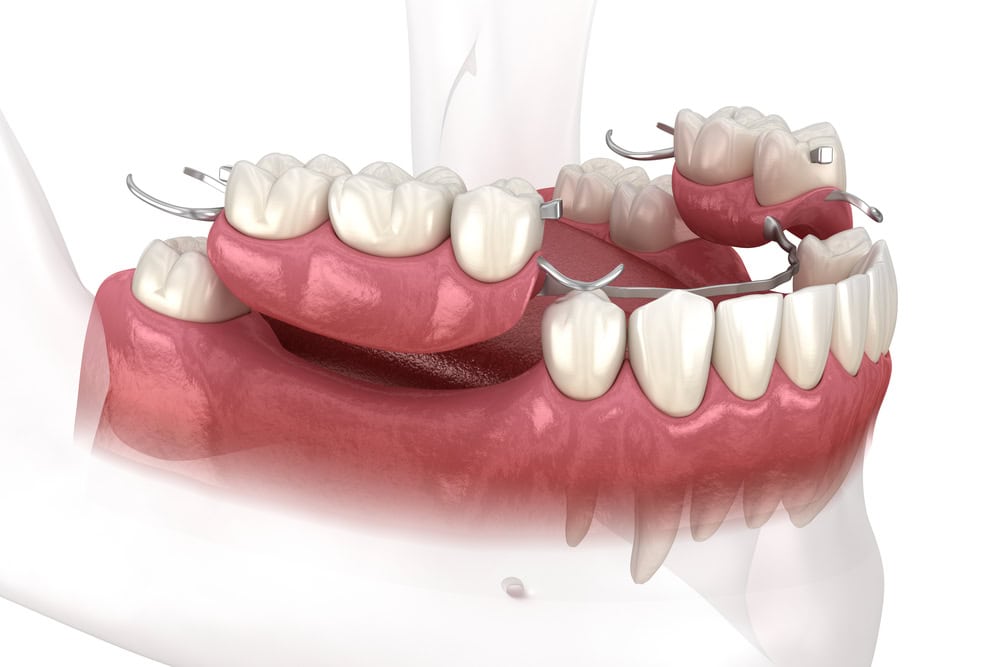The dazzling beauty of a dental crown can transform a person’s smile in an instant.
But what is the process of getting a dental crown, and how long does it take? In this article, we will explore the swift and stunning answer to this important question.
By examining the various factors that impact the time it takes to get a dental crown, we will provide insight into this life-changing process and equip readers to make informed decisions.
What Is a Dental Crown
A dental crown is a custom-made, tooth-shaped cap that is used to cover a damaged or decayed tooth to restore its shape, size, strength, and appearance. Dental crowns provide a permanent solution for weak teeth by protecting them from further damage and decay. They can also be used to support a dental bridge, cover a dental implant, or enhance the appearance of a tooth.
Crowns can be made from a variety of materials, such as metal, ceramic, porcelain fused to metal, or a combination of materials. Each type of crown offers different advantages and disadvantages, so it is important to consult with a dentist to determine which type is best for the individual situation.
The dental crown procedure typically requires two visits to the dentist. During the first visit, the dentist will take impressions of the tooth and surrounding teeth, and will then send the impression to a lab to create the crown. During the second visit, the dentist will fit the crown and cement it into place. In some cases, a temporary crown may be placed while the permanent crown is being made.
What Is the Process of Getting a Dental Crown
Getting a dental crown involves a detailed process that involves both visits to the dentist and the selection of the appropriate material. This process may take several weeks to complete, depending on the type of crown being installed and the patient’s individual needs.
Here is a 4-step summary of the process:
- Root Canal: If the tooth is severely decayed or infected, the dentist may need to perform a root canal to save the tooth before a crown can be fitted.
- Dental Impression: The dentist will take an impression of the tooth to create a model of the tooth. This model will be used to create the crown.
- Types of Crowns: The dentist will then select the type of crown that is best suited for the patient. Options include porcelain, ceramic, and zirconia crowns.
- Fitting and Placement: The dentist will use a special composite resin to fit and place the crown on the tooth. In some cases, same-day crowns are available, so the patient can get their crown the same day they visit the dentist.
Overall, the process of getting a dental crown can take anywhere from one to several weeks, depending on the type of crown being installed and the patient’s individual needs.
How Long Does It Take to Make a Dental Crown
Fabricating a dental crown can be a lengthy process, with the amount of time required varying based on the type of crown and the patient’s individual needs.
Dental crowns, also known as tooth crowns, are custom-fitted covers that are made to protect and enhance a damaged tooth. The type of material used to make the crown and the complexity of the design will determine its duration. A digital impression is taken of the damaged tooth, and the crown is designed and crafted with the same material. The crown is then fixed to the tooth with temporary cement.
Gold crowns are the most durable type of crown and typically take the longest to create. Crowns made of other materials, such as porcelain, may require less time. For those who need a crown replacement, the process is generally quicker. A variety of materials are available to choose from, allowing patients to choose something that gives a natural appearance.
Ultimately, the timeline of the process depends on the individual needs of the patient and the type of material used to make the crown.
How Long Does It Take to Place a Dental Crown
Once the crown is ready, it typically takes a few days to place the crown securely on the damaged tooth. Placing a dental crown involves a few steps to ensure the tooth structure is prepared, as well as a few steps to ensure the crown is placed properly and with proper care. These steps include:
- Preparing the tooth structure: This process involves removing any decay or damage and reshaping the tooth to make room for the crown.
- Selecting the type of material: Dental crowns are made from a variety of materials, including metal alloys, porcelain-fused-to-metal, and lithium disilicate.
- Creating the crown: A tooth-shaped cap is created from the material chosen to match the natural teeth.
- Placement of the crown: The crown is then placed on the tooth and secured with dental cement.
The entire process can be completed in a single appointment, depending on the complexity of the case. The dentist will ensure the crown fits correctly and does not irritate the gum tissue, as well as ensure the crown looks natural and blends in with the other teeth.
With proper care, a dental crown can last many years and restore a beautiful oral health and healthy smile.
Factors That Impact the Time It Takes to Get a Dental Crown
Several factors, such as the type of material chosen and the complexity of the case, can affect the time it takes to get a dental crown. Dental professionals must take into account the number of visits necessary, whether the entire original tooth needs to be restored, and if root canal treatment is needed. Depending on the type of crown chosen, traditional crowns require two visits, whereas a filling material can be used in a single visit. If an impression material is used, the dentist will have to wait until the impression is ready to be sent to the lab for the crown to be made.
Additionally, if an experienced dentist is working on the case, the time needed may be reduced. The type of crown chosen can also influence the time it takes to get the crown. Porcelain-fused-to-metal crowns usually require two visits, while a gold crown may require three. If the crown is for a single tooth, the dentist will need to ensure the crown fits into the natural bite of the patient.
All these factors may contribute to the time it takes to get a dental crown.
What to Do After Getting a Dental Crown
After receiving a dental crown, it is important to take certain precautions to ensure it lasts for a long time. To ensure the best possible outcome, here are four important steps to take:
- Attend Regular Checkups: Regular checkups with your dentist will help ensure the crown is properly fitted and functioning correctly.
- Pay Attention to Color: When the crown is placed, it should match the color of your teeth and provide good color distribution. If it does not, make sure to ask your dentist to adjust the color or material to achieve a complete image.
- Choose Durable Materials: Dental crowns should be made of ceramic or other durable materials, to ensure they last for a long time.
- Monitor Aesthetic Appearance: Regularly monitor the aesthetic appearance of your crown to ensure it is still providing the desired look.
Key Takeways
The dental crowning process is a lengthy one, but the results are well worth the wait. The swift and stunning transformation of a patient’s smile is a true testament to the power of modern dentistry.
The time it takes to make and place a crown may vary based on several factors, but the end result is sure to be a smile that will last a lifetime.
If you’re looking for a dental practice that can provide you with a stunning smile that will last a lifetime then visit Western Sydney Smiles. Our experienced and highly skilled team of dentists in St. Marys, NSW are ready to provide you with the highest quality of care and attention and create a beautiful and lasting smile for you. We look forward to helping you achieve the look you’ve always wanted. Contact us today to learn more about our dental crowning process and to get started on your journey to a beautiful smile!







